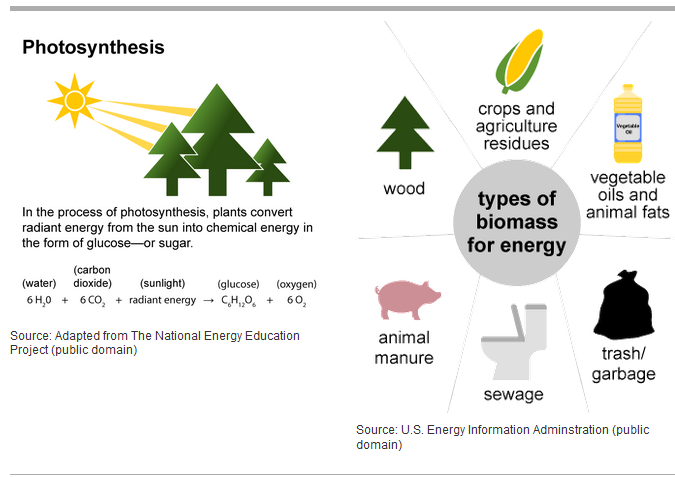Biomass is renewable organic material that comes from plants and animals. Biomass was the largest source of total annual U.S. energy consumption until the mid-1800s. Biomass continues to be an important fuel in many countries, especially for cooking and heating in developing countries. The use of biomass fuels for transportation and for electricity generation is increasing in many developed countries as a means of avoiding carbon dioxide emissions from fossil fuel use. In 2021, biomass provided nearly 5 quadrillion British thermal units (Btu) and about 5% of total primary energy use in the United States.
Biomass contains stored chemical energy from the sun. Plants produce biomass through photosynthesis. Biomass can be burned directly for heat or converted to renewable liquid and gaseous fuels through various processes.
Biomass sources for energy include:
- Wood and wood processing wastes—firewood, wood pellets, and wood chips, lumber and furniture mill sawdust and waste, and black liquor from pulp and paper mills
- Agricultural crops and waste materials—corn, soybeans, sugar cane, switchgrass, woody plants, and algae, and crop and food processing residues, mostly to produce biofuels
- Biogenic materials in municipal solid waste—paper, cotton, and wool products, and food, yard, and wood wastes
- Animal manure and human sewage for producing biogas/renewable natural gas



